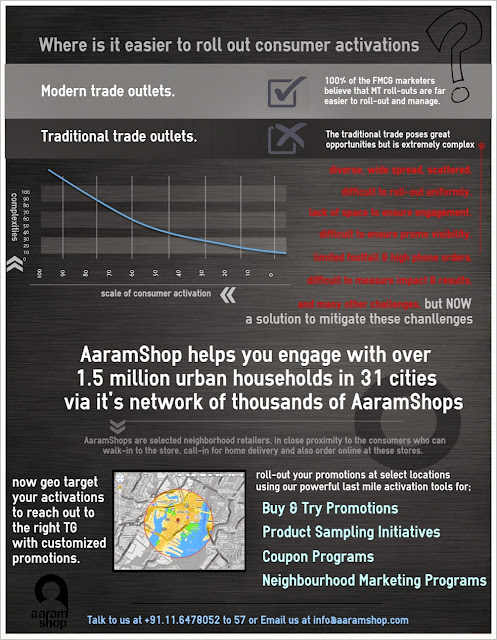As against at modern trade outlets, undertaking brand activations at traditional trade outlets is tough to undertake and even more difficult to measure for impact and ROI.
AaramShop can not just help your strategize with creation of last mile campaigns, but also undertake the comprehensive program, including reaching-out to partner retailers, rolling-out consumer engagement and measuring the impact of your marketing initiative.
AaramShop can not just help your strategize with creation of last mile campaigns, but also undertake the comprehensive program, including reaching-out to partner retailers, rolling-out consumer engagement and measuring the impact of your marketing initiative.
We have fine-tuned our solutions to specifically engage with independently owned, A category, neighborhood outlets. It is with these outlets that we help drive tertiary sales for your brands. Our on-ground activations are backed up with digital initiatives to ensure that your product gets into the shopping list of consumers.


















































